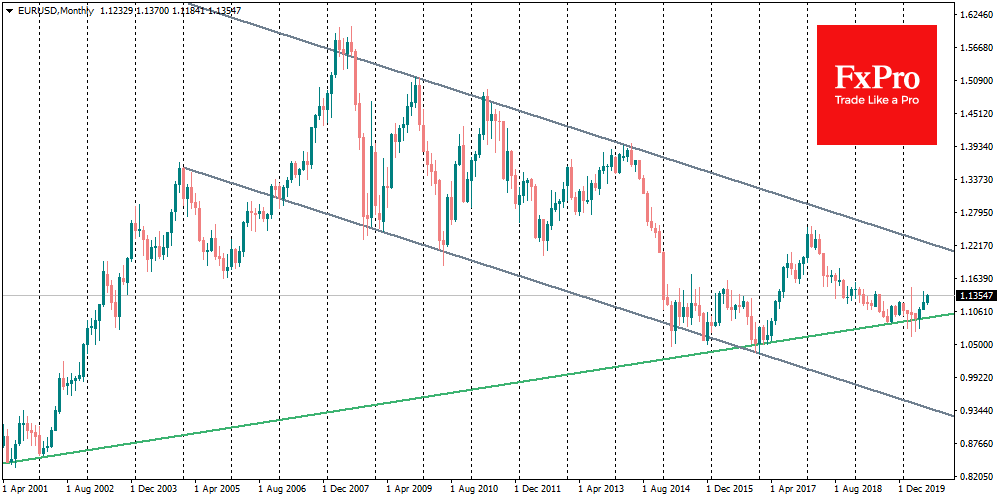Will coronavirus cause the global decline of the dollar?
July 09, 2020 @ 11:05 +03:00
The dollar index has now returned to the June low, losing 1.4% since the beginning of the month against a basket of the most popular world currencies. Stable growth against the dollar is shown by the pound, which rose to 1.2630 on Thursday morning, for the fifth consecutive trading session. The single currency meanwhile is in the area of 1.1360, which is one step from the important resistance level of 1.1400.
The pressure on the dollar is explained by a moderate recovery in demand for risk assets. Outside the U.S., many large economies are witnessing improved business activity, while consumers are returning to stores. This means that financial assets in these countries are becoming more attractive, and central banks can at least take a pause in policy easing. Data on orders for machinery and equipment in Japan and producer prices in China, published this morning, were better than expected. This is a signal that factories in the region feel confident for the future.
In contrast, Fed officials are increasingly doubtful about the sustainability of the economic recovery. FOMC members Rosengren and Barkin are concerned by “air in pockets” of the U.S. economy: businesses have fulfilled orders but are not receiving new ones, and the period of special benefits for the unemployed is ending. The Fed’s attention to this problem is interpreted by markets as a willingness to further increase asset purchase programs on its balance sheet.

This policy undermines the position of the dollar, whose “supply” is increasing. It is also important that the Americans continued to pay their debts in May. For the U.S., lending is often the main driver of growth, and a decline in credit activity can stall it even if the situation is other sectors is quite favorable.
It is worth noting that this is a complete reversal of the situation compared to previous years, when the U.S. economy accelerated much faster than Europe, in contrast to the slowdown in China. At that time, it supported the dollar and allowed the Fed to raise the interest rate when others could not. This could become a long-term trend, forcing the dollar to offset the gains of the last six years, leaving the potential for it to decline by 20% in the next few years.

However, the situation around the coronavirus may compensate for the pessimistic forecasts for the dollar. Yesterday the number of new infections in the U.S. exceeded 60K- a new one-day record. Cities in Australia and Tokyo, where restrictive measures are returning, also set their daily records on the number of detected infections. So far it has not disturbed the markets, but it is a very fragile situation. The return of restrictions for economies, especially for the U.S., could revive demand for the dollar among market participants in an attempt to reduce investment in risky assets.
The FxPro Analyst Team






